Ha Giang is the northernmost province of Vietnam, bordering Cao Bang to the east, Yên Bái and Lào Cai to the west, Tuyên Quang to the south, and China to the north. The winding and steep roads of Hà Giang are quite challenging for drivers. However, when you look around, the tension gives way to a feeling of relaxation as you admire the beauty of the highlands.
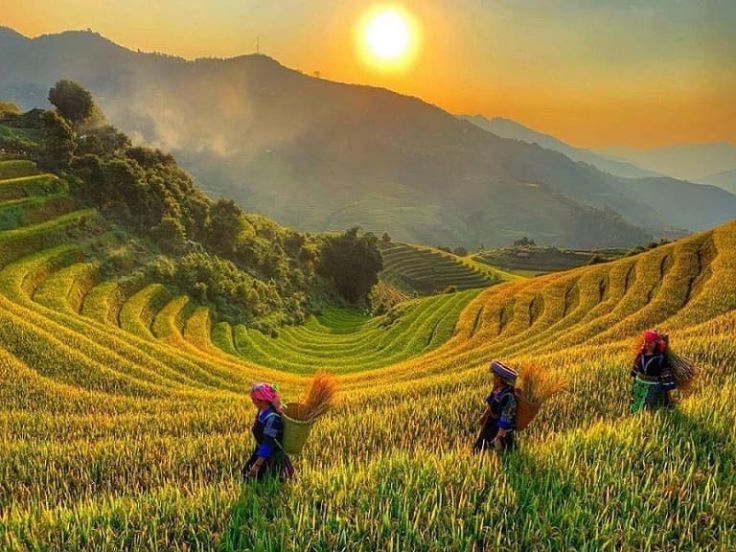
When is the best time to visit Hà Giang?
As a high mountainous province, the climate in Ha Giang is significantly colder than the lowlands and midlands. The average annual temperature is about 21-23 degrees Celsius. A prominent feature of the climate is high humidity throughout the year, with a lot of rain and long rainy seasons.
You can travel to Ha Giang at any time of the year. People often come to Ha Giang in the autumn when the rice turns golden. The best time is from October to December, when buckwheat flowers or mustard fields bloom. In the spring, peach and plum blossoms cover the forest, making you feel like you are floating on a cloud.
In May, the fields are shimmering with water. In June and July, many people miss Ha Giang because of the sudden summer showers. But thanks to this humidity, the mountains and forests here are covered in a lush green color that captivates people’s hearts.
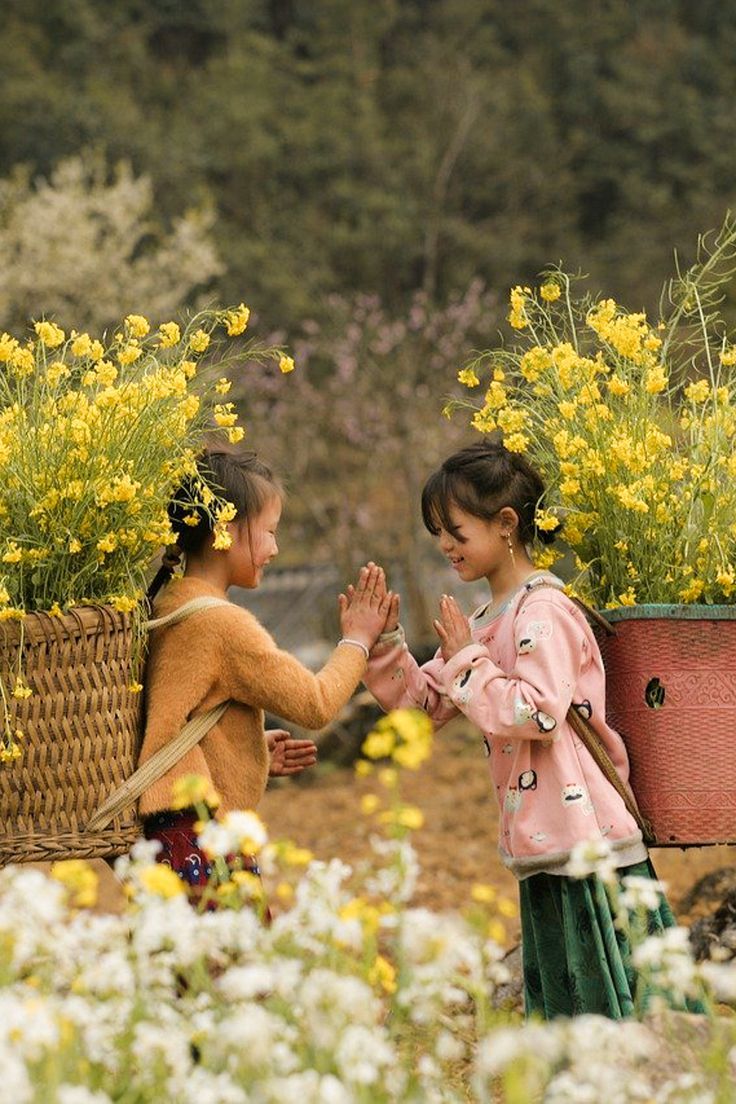
How to Getting There
Reaching Hà Giang from northern provinces is straightforward with numerous direct bus services. For those traveling from the southern or central regions, Hanoi is the most convenient starting point. Several bus stations in Hanoi, including Mỹ Đình, Lương Yên, Yên Nghĩa, and Gia Lâm, offer frequent departures to Hà Giang. Travelers can choose from comfortable sleeper buses or luxurious limousines to suit their budget.
To maximize your time and energy for exploring, overnight buses are the recommended option. Ticket prices typically range from 200,000 to 300,000 VND for a one-way trip. Upon arrival in Hà Giang City, renting a motorbike is a popular choice for independent travelers. Daily rental rates range from 150,000 to 300,000 VND. For those who prefer a more leisurely pace or are traveling with young children or the elderly, hiring a private car with 7 to 16 seats is a convenient option.
Where to Stay in Ha Giang
For a truly immersive experience, consider staying at P’apiu in Yên Định commune. Nestled amidst stunning highland scenery, this upscale resort offers luxurious villas inspired by the traditional earthen wall houses of the H’mong people. The highlight is the longest brocade road in Vietnam, adding a vibrant touch to your stay. Nightly rates start from 10,000,000 VND.
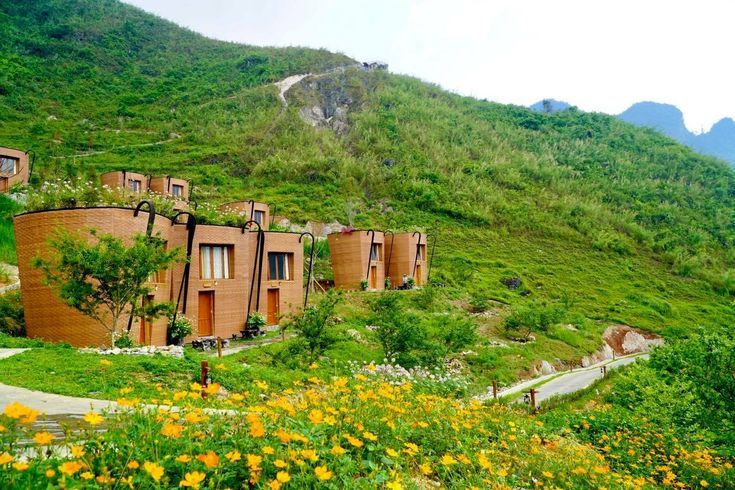
If you’re seeking a more unique and adventurous stay, H’Mong Village is worth exploring. Situated on the hills of Tráng Kìm, this distinctive resort features spindle-shaped bungalows that offer breathtaking views of the Miện River and surrounding mountains. Guests can choose between communal rooms and private bungalows, with rates starting from 400,000 VND and 2,400,000 VND per night, respectively.

For a more community-oriented and budget-friendly option, consider staying at homestays. In Hoàng Su Phì, Hoang Su Phi Lodge and Kinh Homestay are located near the terraced fields in Nậm Hồng village; Hồ Thầu Eco Village in Hồ Thầu commune offers traditional stilt houses with thatched roofs. Additionally, you can stay at Chúng Pủa – Auberge de MeoVac with a local earthen house or Bùi homestay, a stilt house in Đồng Văn. In Đồng Văn, there’s also the ancient house of Hoàng Thân for 100,000 VND per person; and Ong Vàng Mèo Vạc for only 230,000 VND per night. In the Lô Lô Chải village near Lũng Cú flagpole, there’s the Lo Lo Ancient House homestay.
Things to do in Ha Giang
As the tourist attractions in Hà Giang are spread out, it’s recommended to plan a trip of at least 3 days and 2 nights to fully explore the area. A 3-night 4-day itinerary is suggested by many travelers, or even a longer 5-day trip for those with more time. Here’s a suggested itinerary for a 3-night 2-day trip:
Day 1: Hanoi – Ha Giang – Dong Van
To catch the Đồng Văn market on Sunday morning, you should depart from Hanoi on Friday evening. By 8 AM the next day, you can continue your journey to Đồng Văn and take photos along the way while the morning air is still fresh. The road from Hà Giang city to Đồng Văn should be divided into smaller sections to enjoy the scenery rather than driving straight through.

Stage 1: Hà Giang – Quản Bạ Heaven Gate (40 km) From the city, the first stop is the Kilometer 0 marker, followed by a 40 km drive to Quản Bạ. Here, Heaven Gate is a famous check-in point, but if you go in winter, you may encounter fog. If the weather is clear, you can take photos and admire the rice fields below. From here, you can see Nặm Đăm Lake, located in Nặm Đăm village, which is known for its Dao minority homestay. Besides Heaven Gate, you can also visit the Twin Mountains nearby.

Stage 2: Quản Bạ Heaven Gate – Yên Minh town (30 km) Note that when you reach Cán Tỷ bridge, there are two forks. The uphill route will save you 20 km but is more challenging and requires a confident driver. Plan your time to arrive in Yên Minh for lunch.

Stage 3: Yên Minh town – Đồng Văn ancient town (45 km) This route is known for its beautiful scenery and popular tourist attractions. One of them is Dốc Thẩm Mã or 9-Bend Pass, an iconic check-in point in Hà Giang. Here, you’re likely to meet foreign travelers, landscape photographers, and H’mong children carrying baskets of flowers.

Fox Village offers a glimpse into the traditional H’mong way of life, untouched by commercialization. For film buffs, a visit to Pao’s house, the iconic setting of numerous Vietnamese movies, is a must. This unique dwelling serves as both a home and a popular tourist attraction. These destinations are approximately 10 kilometers apart, so plan your itinerary accordingly to ensure you arrive in Đồng Văn before nightfall.

Day 2: Dong Van – Meo Vac
Stage 1: Start your day by immersing yourself in the vibrant atmosphere of Đồng Văn’s local market. Explore the stalls brimming with traditional H’mong handicrafts, fresh produce, and local delicacies. After the market, visit the historic King H’mong’s Palace, a stunning example of Chinese-inspired architecture.
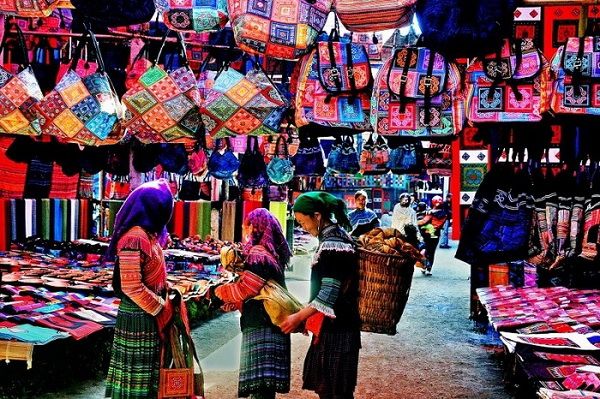
Stage 2: For early risers, an unforgettable experience awaits at Lũng Cú flagpole, the northernmost point of Vietnam. Embark on a scenic drive through the mountains and enjoy breathtaking views. After exploring the flagpole, relax with a cup of coffee at the Cực Bắc cafe. In the afternoon, embark on a boat trip along the emerald waters of the Nho Quế River. The journey takes you through breathtaking landscapes, including the famous Hẻm Tu Sản.

Stage 3: Afterward, conquer the winding Mã Pì Lèng Pass and visit the Happiness Road Museum to learn about the history of this iconic road. End your day with a mesmerizing sunset view at the 12 km marker before settling in at a traditional Mông village in Pả Vi.

Day 3: Meo Vac – Ha Giang City – Hanoi
Wake up to the serene beauty of Pả Vi, surrounded by lush green mountains. Mèo Vạc is located approximately 150 kilometers from Hà Giang City, so an early start is recommended to catch your bus back to Hanoi. You have two departure options: 2 PM (arriving in Hanoi at 9 PM) or 9 PM (arriving in Hanoi at 4 AM the next morning).
For a more direct route, opt for the 2 PM departure and head straight to Hà Giang City via Mậu Duệ, Yên Minh, and Quản Bạ. Be aware that the road between Mèo Vạc and Mậu Duệ is in poor condition.
If you have more time, choose the 9 PM departure and explore additional attractions. Take the Mậu Duệ – Đường Thượng road, visit the vibrant Lùng Tám Weaving Village, and marvel at the natural wonders of Lùng Khúy Cave before heading to Hà Giang City.
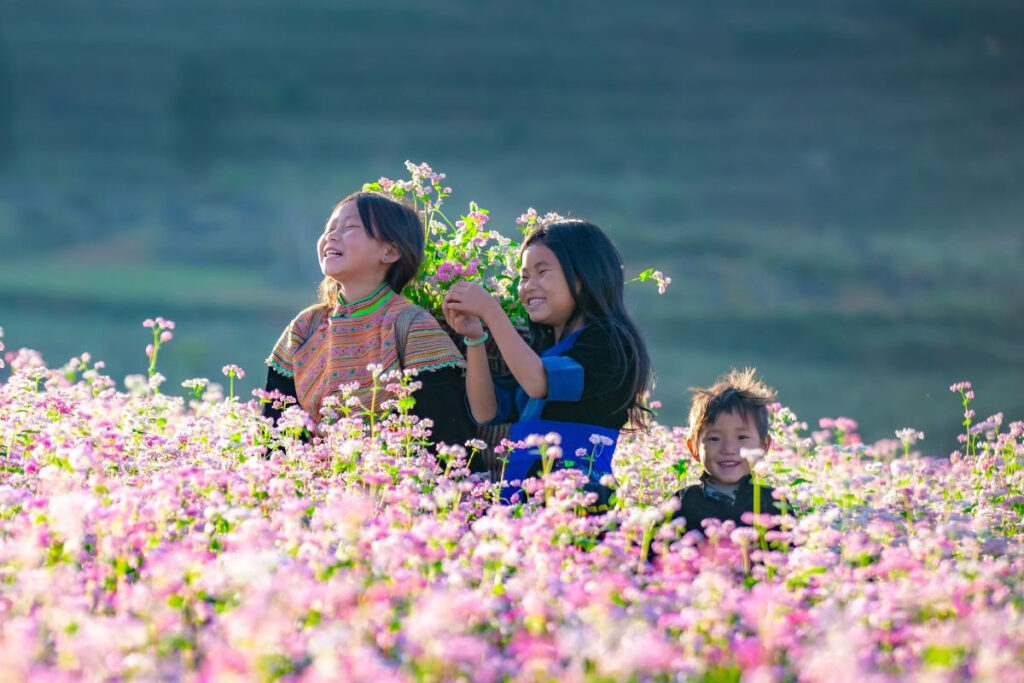
What to Eat in Ha Giang
Egg crepe
No trip to Hà Giang is complete without trying the local egg crepe, a delicate dish featuring a thin layer of batter enveloping a vibrant red yolk. This unique treat is a must-try for food lovers.

Au Tau porridge
For a truly unique culinary adventure, try ấu tẩu porridge. This traditional dish is made with sticky rice, pork leg, and the medicinal ấu tẩu root. The root is meticulously prepared by soaking it in rice water overnight and then simmering it for hours until it becomes tender. The resulting porridge is not only comforting but also believed to have healing properties. It is important to note that ấu tẩu root is toxic if not cooked properly, so it’s essential to follow traditional cooking methods.

Sticky rice cake
Bánh chưng gù is a specialty of Hà Giang, made by hand. The crust of the cake is green or black depending on the type of rice. If the cake is green, the rice is mixed with lá giềng leaves, and if it is black, sticky rice is used. The filling has both lean meat and fat. A few families in Hà Giang city make these cakes daily, but you have to order in advance because the quantity is limited. Each cake costs about 17,000 VND.

Thang Den
Resembling Hanoi’s bánh trôi tàu, Đồng Văn’s thắng dền is made from glutinous rice flour and can be enjoyed either plain or with a sweet bean filling.
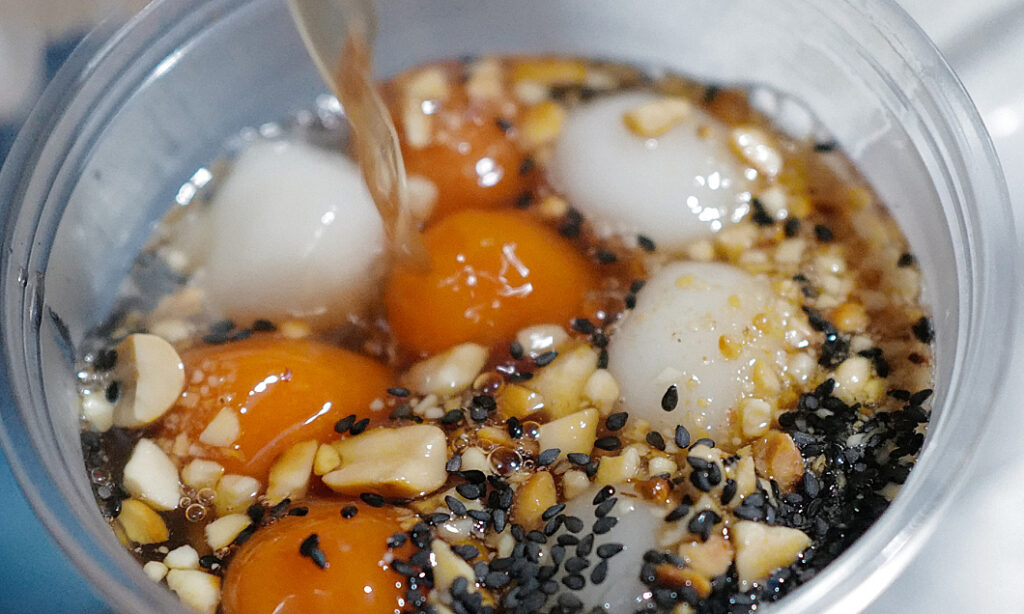
Thang Co
Thắng cố, a bold and flavorful dish from the Northwest region, is not for the faint of heart. Its unique aroma comes from a blend of cardamom, hạt dổi, and lemongrass, while the rich, savory taste is derived from various meats.

Buckwheat cake
Buckwheat cake, a signature dish of the H’mong people in the rocky plateau, undergoes a meticulous preparation process. Harvested buckwheat is ground into a fine flour, mixed with water, and shaped into flat round cakes. After steaming, these cakes are traditionally grilled or fried. The result is a fragrant, slightly sweet, and slightly grainy treat.

Bac Me sticky rice
Bắc Mê sticky rice, a beloved dish of the Tay ethnic people, offers a unique and aromatic flavor. Cooked in bamboo tubes lined with banana leaves, the rice absorbs a delicate smoky flavor. This traditional dish is often enjoyed with sesame salt or paired with grilled river fish, creating a truly authentic culinary experience.
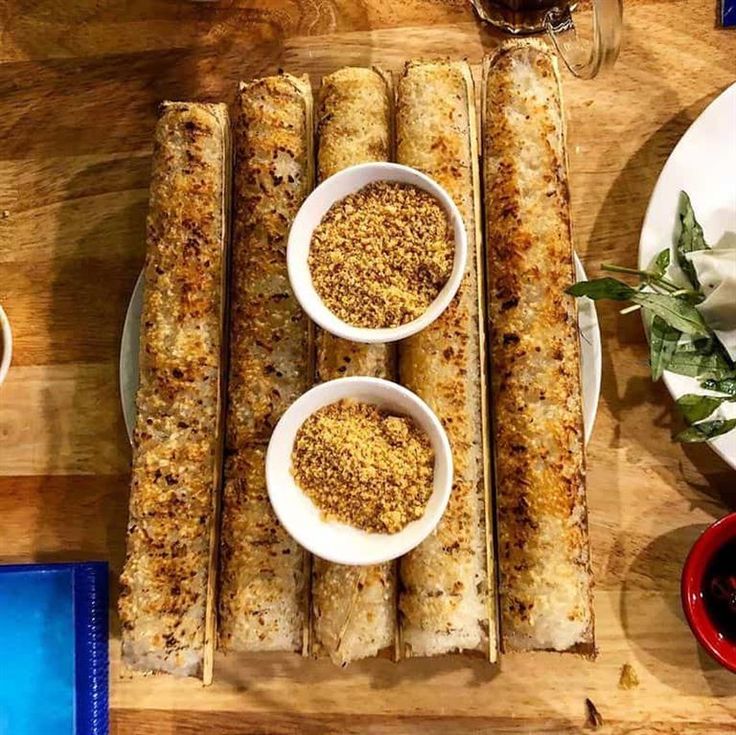
Tips for Your Trip
- Best time to visit: The dry season, from October to April, is the best time to visit Hà Giang.
- Transportation: Motorbikes are the most popular way to get around, but you can also join organized tours.
- Accommodation: Homestays offer a unique and authentic experience, while hotels and guesthouses are available for those who prefer more modern amenities.
- Packing: Be sure to pack comfortable clothing, sturdy footwear, and a raincoat.
Du Hy/vnexpress





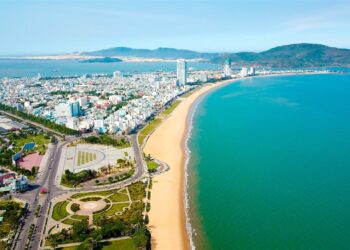















Discussion about this post